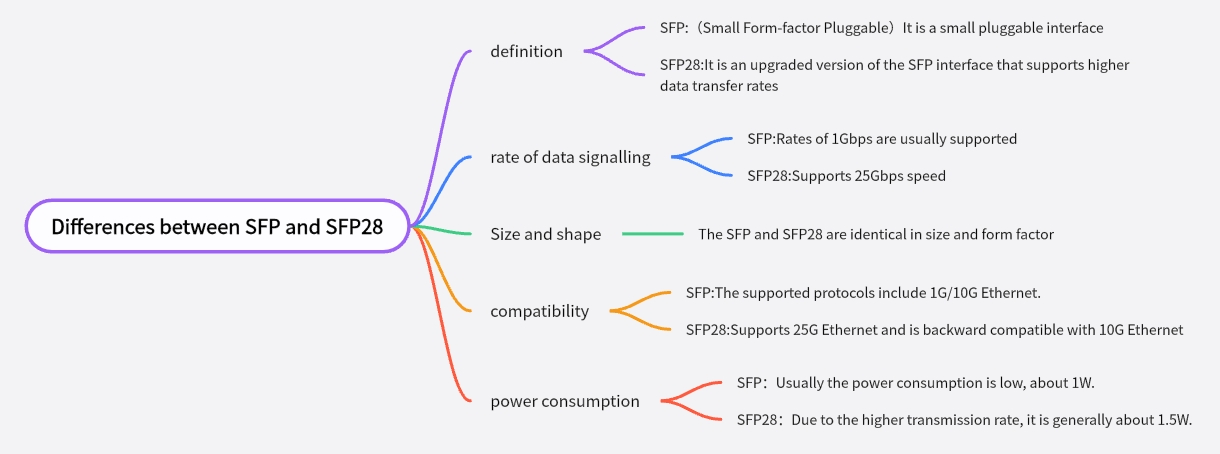

1. 評価
SFP: SFP モジュールは 1 Gbps から 10 Gbps までの伝送速度で利用でき、一般的に 1 Gbps (SFP) および 10 Gbps (SFP+) バージョンが利用できます。
SFP28: SFP28 モジュールは 25 Gbps の伝送速度用に設計されており、高速ネットワークに対応するために SFP+ (10 Gbps) と比較してより高い帯域幅を備えています。
2. 帯域幅
SFP: ギガビット イーサネット (1 Gbps) から 10 ギガビット イーサネット (10 Gbps) までの低帯域幅。
SFP28: より高い帯域幅。最大 25 Gbps の高速アプリケーション向けに設計されており、現代のデータ センターの高帯域幅の需要を満たすのに適しています。
3. 互換性
SFP: サポートされているプロトコルには、1G/10G イーサネットが含まれます。
SFP28: 25G イーサネットをサポートし、10G イーサネットとの下位互換性があるため、10G 対応デバイスへの接続に使用できます (下位互換性あり)。
4. 消費電力
SFP: 通常、消費電力は 1W 程度と低くなります。
SFP28: 伝送速度が速いため、消費電力もわずかに高くなり、通常は約 1.5W になります。
5. 応用シナリオ
SFP: 主にギガビットおよび 10 ギガビット ネットワークで使用され、中小規模のネットワークや、非常に高い帯域幅を必要としないシナリオに適しています。
SFP28: データセンター、クラウド コンピューティング、高性能コンピューティング (HPC) など、25G ネットワークを必要とするシナリオで広く使用されており、将来の高速ネットワーク要件に適しています。
まとめ
SFP モジュールと SFP28 モジュールの違いは、主に速度とアプリケーション シナリオにあります。SFP は 1G ~ 10G ネットワークに適していますが、SFP28 はより高い帯域幅を持つ 25G ネットワーク向けに設計されており、より高いデータ転送速度を必要とする最新のデータ センター環境に適しています。